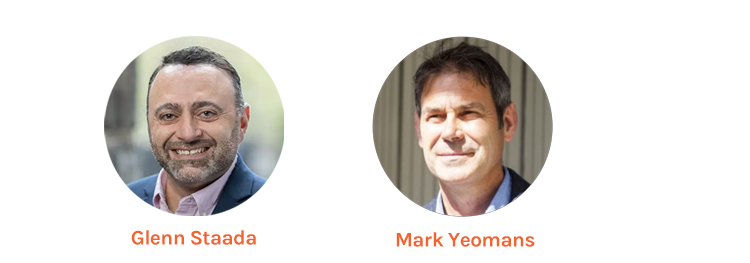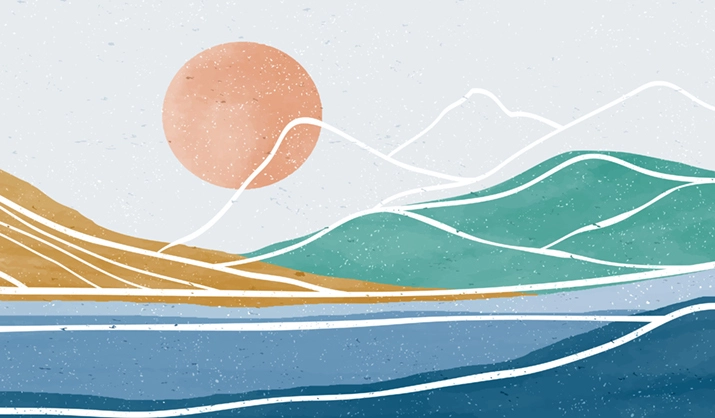In our continuing effort to grow our global reach, we recently merged with Strive Insight, a London-based firm known for their strategic thinking and consulting skills. Our Global Growth blog series features conversations with leaders from Radius and Strive offering their perspective on our Brand Growth Navigator approach. In this post, Glenn Staada, a Senior Vice President at Radius, and Mark Yeomans, a Director at Strive, discuss how the right approach to Market Landscape research can help brands balance global growth goals with the needs of regional and local markets.

What are the guiding principles of implementing a Market Landscape study?
MARK YEOMANS: We first want to understand what the client wants to do with the research. Who on their team will be using it? Is it for the product teams to develop new propositions or new products? Or is it more for the marketing team to understand channels, messaging and media usage? Landscape studies can be very broad, so we always try to have a good starting discussion that then shapes the scope in terms of the question areas to explore within the study.
GLENN STAADA: Yes, I agree with you, Mark. For global work across markets, it’s always good to understand how the client’s organization goes to market. Do they have a global strategy with local markets, and nuanced local market teams that are executing and selling? Is it purely a one-size-fits-all global approach where there’s a centralized leadership team in one country and they’re working across multiple regions? It’s also helpful to know where the client teams have boots on the ground — people who can help us understand the landscape of who the client is up against as far as in-market competition, and how the cultural situation is different in each local market. This will help us see the global construct to guide us and provide information about local market nuances. This way, as we are thinking about activating the research, we know what we’re looking at in each market.
What are some strategic ways brands can balance their global goals with the needs of local markets or sectors in which they operate?
MARK: You have to do the groundwork rather than going straight into research, particularly if it’s an established brand entering an emerging market. You have to consider aspects like regulation and infrastructure such as the state of cellular networks and internet connections that could potentially impact the brand.
GLENN: It is important to have expert resources in each market who can help you understand the situation there.
MARK: Exactly. So, for example if we have a client who is interested in research in China, we can get on a call with members of our network there and discover quickly if there are regulatory or infrastructure issues that could stall the client’s project. In an ideal world, once we have talked to clients and partners on the ground, we would run some qualitative research as a precursor to quantitative. And while we can watch focus groups or interviews on film, actually going to a market and experiencing it and then spending some time with the moderator is so helpful in gaining deeper insights. It also gives you an opportunity to walk around and see, for instance, how drivers use a gas station, or how people pay for meals in restaurants.
It’s also helpful to know where the client teams have boots on the ground — people who can help us understand the landscape of who the client is up against as far as in-market competition, and how the cultural situation is different in each local market.” — Glenn Staada
What is important to consider when identifying global versus regional competitors and threats?
GLENN: Every market is different in terms of competitors. A brand might want to understand the competition in a dozen markets, but their next biggest competitor may only be operating in three of those markets, with different competitors and positioning in the rest.
As a research partner, we need to design the research to evaluate various factors such as competitors and opportunities in each market and establish different metrics to accommodate the situational aspects of multiple markets.
MARK: Yes, I absolutely agree with that, you need to focus on all types of competitors. For example, we work for a major energy brand and in this category there are both global competitors, and also very strong regional and local competitors. That’s always an interesting dynamic to look at because consumers have different connections and affinities with brands.
GLENN: It’s helpful to access market share and sales data, and even social listening to identify competitive threats and market shifts in various regions. Competition for a brand isn’t always the other brand, it may be the situation on the ground, so we also consider the geopolitical situation as something that could be a competitive threat.
MARK: Yes, it’s not always just the product that the client is focused on. We did a study a few years ago for a major card company that saw everything through the lens of “credit cards,” but consumers were looking at their whole financial situation, so although the brand had credit card competitors, it was also competing against lending products and even customers getting loans from their family. It’s critical to look at the wider piece so that you can understand the totality of the environment in which they’re operating.
What kind of outcomes do brand teams see from Market Landscape studies?
MARK: Market Landscape studies are foundational pieces of research that become a reference point for client teams. As they consider new campaigns, they can go back to the Market Landscape insights to understand the needs people have in various markets.
GLENN: Market Landscape research helps you establish the situation on the ground, who the key players are, and what customers want. You gain an understanding of what the tension points are for your brand and what you need to do about it. Markets typically won’t change very much over a year or 18 months, but what will change is how brands are performing, so the Market Landscape study may lead to a brand tracking element to help brand teams understand how they’re doing against KPIs and if they’re driving consideration.
Market Landscape studies are foundational pieces of research that become a reference point for client teams. As they consider new campaigns, they can go back to the Market Landscape insights to understand the needs people have in various markets.” — Mark Yeomans
How do you help clients identify white space and new opportunities?
MARK: We will generally have a very rich data set to work with and ideally we get the client close to the data as soon as possible and then look for an opportunity to share, what we are both seeing in the data. Quite often we will have a half day or a full day where we can work together to identify initial gaps and opportunities. We want brand teams to sit with the data and plan out a comms campaign or improvements to address market gaps or customer needs to achieve growth objectives. We want them to think about the implications and then take that into further development.
GLENN: It’s essential to understand who the stakeholders are that are going to work with the insights, and hold a workshop with them, as you’re suggesting, Mark, and then potentially work with the individual markets to help them understand the research during a facilitated activation session.
How do you help brand teams develop strategies and activation for multiple markets?
GLENN: In a lot of cases, our clients want a global strategy or positioning, but we need to vary tactics by market to achieve that for them. For example, if a tech-based brand has a strong mobile message, “We make things fast and simple,” then the messaging becomes more about the context. Some international markets are further ahead in technology. Markets in Asia adopted virtual wallets much faster than the U.S. did. So what’s “easy and simple” in Asia right now may not be for U.S. consumers. Our job is to explore the positioning to uncover the correct context in each market.
MARK: This is where you can start to tweak the delivery based on the nuances of each market. Large brands generally want a global strategy that tracks across markets rather than completely different takes in each market, but there has to be an element of localization. Successful activation across markets and teams circles back to where we started, getting key stakeholders from each market involved up front to contribute their ideas and align them to the ambitions of the company. Gaining that deep understanding of where the brand is heading and what the growth goals are lays the foundation for buy-in from everyone who will use the insights. It takes some extra time up-front, but sets the stage for more meaningful research and successful activation planning and execution.



